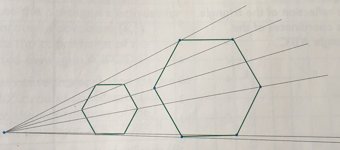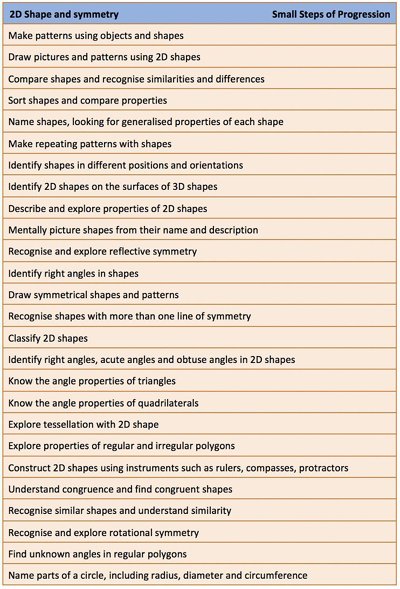If we focus on properties of 2-D shapes, these are the relevant Programmes of Study shown in the blue box. The detail gets a little more explicit in Y5 and Y6 but on the whole there is not a lot to help here with planning and teaching. What is very clear is that you cannot plan and teach by only using the statements in the Programmes of Study. A careful breakdown of the expected outcomes and learning objectives in each year is needed to ensure the necessary depth of experience.
Y1
· recognise and name common 2-D shapes
Y2
· identify and describe the properties of 2-D shapes, including the number of sides and symmetry in a vertical line
· identify 2-D shapes on the surface of 3-D shapes
· compare and sort common 2-D shapes and everyday objects
Y3
· draw 2-D shapes
· recognise that angles are a property of shape or a description of a turn
Y4
· compare and classify geometric shapes, including quadrilaterals and triangles, based on their properties and sizes
Y5
· distinguish between regular and irregular polygons based on reasoning about equal sides and angles
Y6
· draw 2-D shapes using given dimensions and angles
· compare and classify geometric shapes based on their properties and sizes and find unknown angles in any triangles, quadrilaterals, and regular polygons
Take a look if you are a Broadbent Maths subscriber.
Ask children to look at the two triangles and discuss what they notice. Encourage them to measure lengths and angles to compare the similar triangles.
What if you made:
AE = 2 x OA
BF = 2 x OB
CG = 2 x OC
Children can then draw some shapes of their own choice and enlarge them. Discuss ratio when comparing lengths of sides and ask the children to look for generalisations in their findings.








